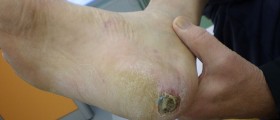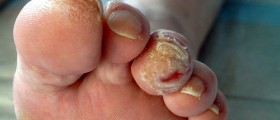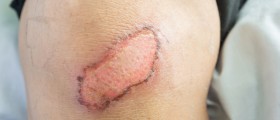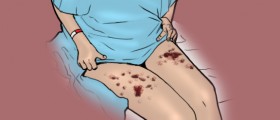
Pressure ulcers or bedsores are a special type of wounds predominantly affecting immobile patients. They may affect only superficial layer of the skin or spread deeper to subcutaneous tissue or even to the underlying muscles. The severity of pressure ulcers varies a lot. Sometimes they are only in the form of skin discoloration while advanced stages of these sores are more complex, leaving deep tissues such as muscles and bones unprotected and exposed to infection.Why are Pressure Ulcers Dangerous?
Pressure ulcers are a serious health issue because once they develop, it is hard for them to be completely cured. They usually progress and represent a highly suitable site for infections, especially if the affected skin is not treated properly and adequately taken care of.
These lesions typically affect the parts of the skin deprived from sufficient blood supply. Lack of blood supply is common if certain body parts remain in the same position for a long period of time. As a result of tissue compression, the blood in the area is expelled and the fresh blood simply cannot reach all the cells, causing their death. Even though pressure ulcers may develop due to a large amount of pressure applied to a skin area over a short period of time, they also occur if the pressure is less intensive but lingers for a long period of time.
Pressure ulcers are common in bedridden patients but they also affect partially mobile older individuals, especially those who cannot move certain parts of their body without someone else's assistance. Furthermore, pressure ulcers are a common problem affecting diabetic patients and those suffering from vascular disease.
Bedsores are very dangerous and may cause a range of complications. First of all, the exposed tissues are vulnerable and prone to infections. Infections are basically bacterial in origin. These microorganisms may enter the bloodstream and trigger even more complex health issue known as sepsis. In sepsis the bacteria spread through the bloodstream reaching many organs initiating their failure. The local infection and disseminated microorganisms are both blamed for a whole-body inflammatory state sometimes blamed for lethal outcome.
Cellulitis is another complication associated with pressure ulcers. This is an acute infection of the skin characterized by redness, pain and swelling. Cellulitis is also capable of triggering sepsis and associated health issues if left untreated.
Many times pressure ulcers cause bone and joint infections. This complication develops once the ulcer spreads deep into the tissues of the affected area.
And finally, even though this is not so common, pressure ulcers that last for a long period of time (chronic pressure ulcers) may be connected with the onset of squamous cell carcinoma.
Best Treatment Methods
Since pressure ulcers are rather hard and challenging to treat and carry the risk of many different complications, the best thing is to prevent their formation. This can be achieved if immobile patients are helped to regularly change their position. Manual techniques along with specially designed mattresses and cushions are of major importance for people prone to pressure ulcers. Still, in spite of maximum care, pressure ulcers can develop, requiring prompt and aggressive treatment.
Even if pressure ulcers have already formed, the person requires further frequent changes in position. The affected part of the skin must be spared of additional pressure as much as possible. The doctor will decide upon repositioning timetable. Many patients need to change their position every 15 minutes. Others, on the other hand, can remain in the same position for a couple of hours. It is essential to teach family members or caregivers correct sitting and lying positions, the ones that are not causing additional reduction of blood supply to parts of the body normally exposed to pressure.
Today many immobile patients may benefit a lot from mattresses and cushions which allow them to frequently change body position and relieve pressure on vulnerable body parts. There are different types of these devices and one can choose the most adequate for individual purposes.
If pressure ulcers have developed, the affected area requires special approach. Namely, it is supposed to be kept clean and covered with specially designed dressings (e.g. hydrocolloid or alginate dressings). Healing is accelerated with certain creams and ointments. Patients are additionally prescribed antibiotics.
A diet of patients suffering from pressure ulcers needs to be enriched with certain dietary supplements. Increased intake of proteins along with zinc and vitamin C supplements have been confirmed beneficial for healing of pressure ulcers.
Sometimes dead tissue needs to be removed. This is done by cleansing and pressure irrigation, ultrasound, laser or with surgical debridement.
Maggot therapy is another treatment options. Although it may sound scary, maggot therapy is highly efficient. Maggots clean the wound completely by removing dead and infected tissue, leaving the healthy one intact.
And finally, if all else fails, patients suffering from pressure ulcers undergo surgery. Surgery is generally used in case of grade III pressure ulcers, when damage spreads to tissues below the skin. The wound is cleaned and the crater is closed by direct suture (the one that brings together the edges of the wound) or by flap reconstruction (transfer of tissue from a nearby parts of the body).

















Your thoughts on this
Loading...